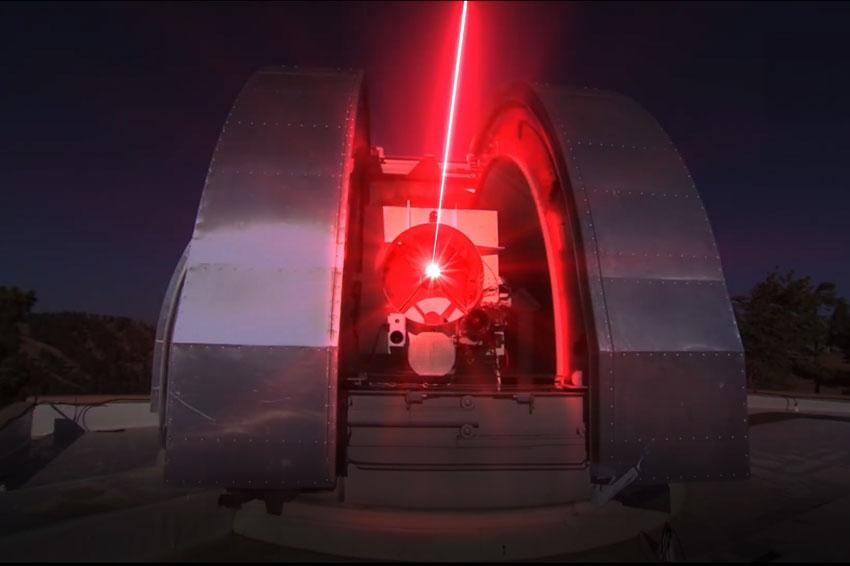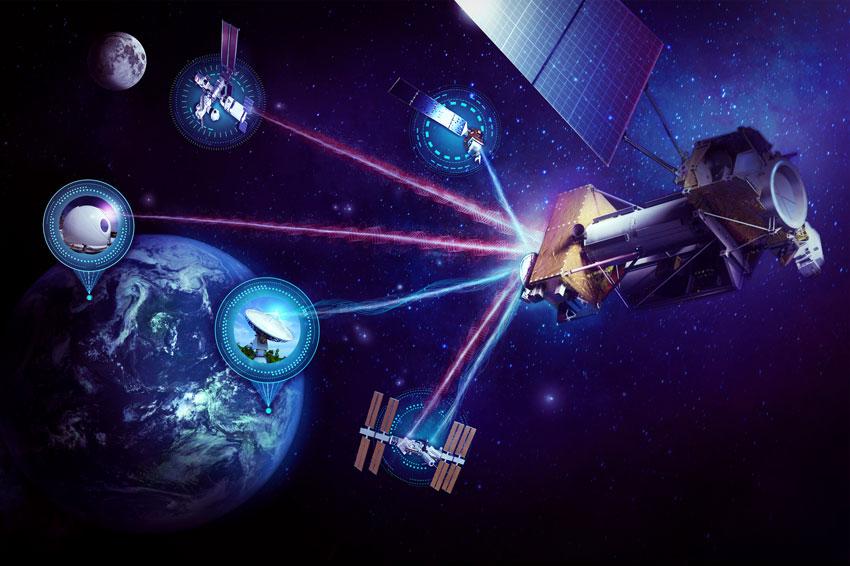Laser communication system achieves 1.2 Gb/s to and from ISS
26.06.2024 - Nasa’s first two-way, end-to-end laser relay system links at a rate of more than a gigabit per second – faster than most home internet speeds.
Recent transmissions from astronauts on the ground and aboard the International Space Station allowed Nasa’s Space Communications and Navigation SCaN program to showcase the power of laser communications while simultaneously testing out a new networking technique. This demonstration was inspired by “Taters the Cat” – an orange cat whose video was transmitted 19 million miles over laser links to the DSOC (Deep Space Optical Communications) payload on the Psyche asteroid mission. LCRD, DSOC, and Illuma-T are three of Nasa’s ongoing laser communications demonstrations to prove out the technology’s viability.
The images and videos started on a computer at a mission operations center in Las Cruces, New Mexico. From there, Nasa routed the data to optical ground stations in California and Hawaii. Teams modulated the data onto infrared lasers and sent the signals to Nasa’s LCRD (Laser Communications Relay Demonstration) satellite, located 22,000 miles above earth in geosynchronous orbit. LCRD then relayed the data to Illuma-T (Integrated LCRD Low Earth Orbit User Modem and Amplifier Terminal), a payload currently mounted on the outside of the space station.
This demonstration also allowed Nasa to test out another networking technique. When data is transmitted across thousands and even millions of miles in space, the delay and potential for disruption or data loss is significant. To overcome this, Nasa developed a suite of communications networking protocols called delay/disruption tolerant networking, or DTN. The “store-and-forward” process used by DTN allows data to be forwarded as it is received or stored for future transmission if signals become disrupted in space.
To enable DTN at higher data rates, a team at Nasa’s Glenn Research Center in Cleveland developed an advanced implementation, HDTN (high-rate delay tolerant networking). This networking technology acts as a high-speed path for moving data between spacecraft and across communication systems, enabling data transfer at a speed of up to four times faster than current DTN technology – allowing high-speed laser communication systems to utilize the “store-and-forward” capability of DTN.
The optimized implementation of DTN technology aims to enable a variety of communications services, from improving security through encryption and authentication to providing network routing of 4K high-definition multimedia and more. All of these capabilities are being tested on the space station with Illuma-T and LCRD in the wake of the Artemis campaign which prepares to establish a sustainable presence on and around the moon.








